Key takeaways:
- Gender bias in education often manifests in subtle ways, influencing students’ confidence and choices, particularly discouraging girls from pursuing their passions.
- Advocacy for gender equality reshapes educational perceptions, allowing diverse role models to inspire all students and dismantle stereotypes.
- Creating inclusive environments and safe spaces for open dialogue enhances students’ engagement and empowerment, enabling them to express their identities.
- Community support amplifies advocacy efforts, fostering connections that lead to collective action for lasting change in education.
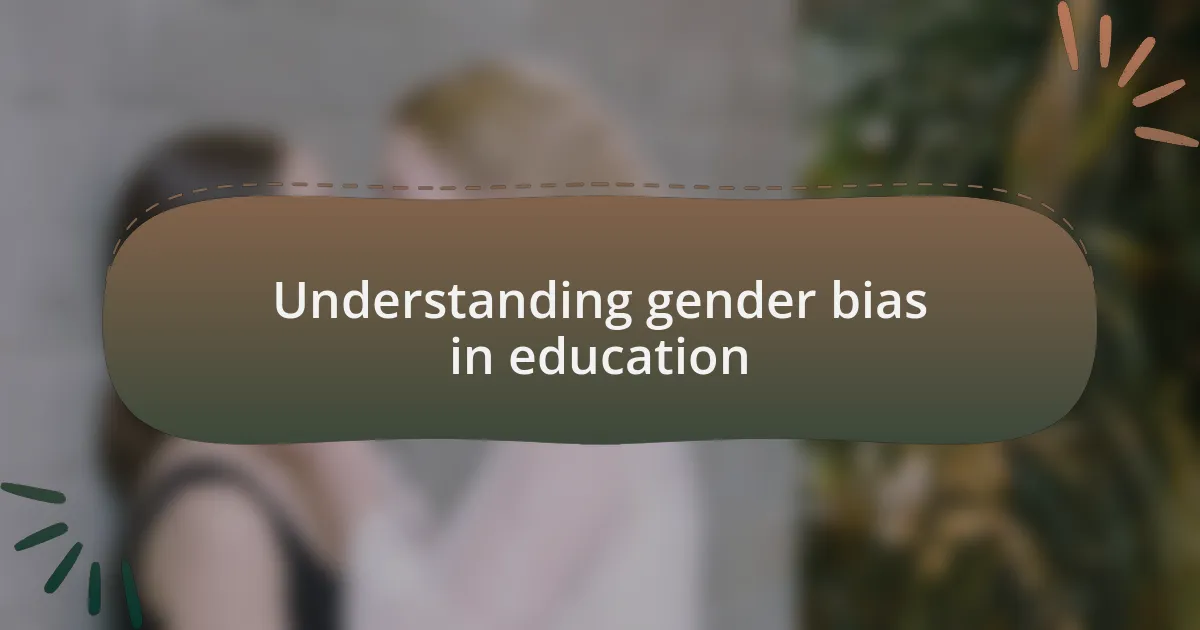
Understanding gender bias in education
Gender bias in education is often more subtle than we realize. During my own schooling, I noticed how teachers would unconsciously praise boys more for their assertiveness while girls were often encouraged to be more reserved. It left me questioning, why do we celebrate dominance in boys but discourage it in girls?
In addition to overt behaviors, there are structural biases deeply embedded in curriculum and classroom interactions. For instance, I recall a moment in a group project where my female peers felt sidelined during discussions about technical subjects. This experience not only undermined their confidence but also made me wonder: How many capable voices are silenced simply because of outdated perceptions of gender roles?
The impact of these biases can be long-lasting and far-reaching. I think back to the students I met who had internalized the belief that certain subjects weren’t for them, often leading them to choose paths that didn’t align with their passions. This makes me ponder—how many dreams are deferred because we still haven’t adequately addressed these biases in education?
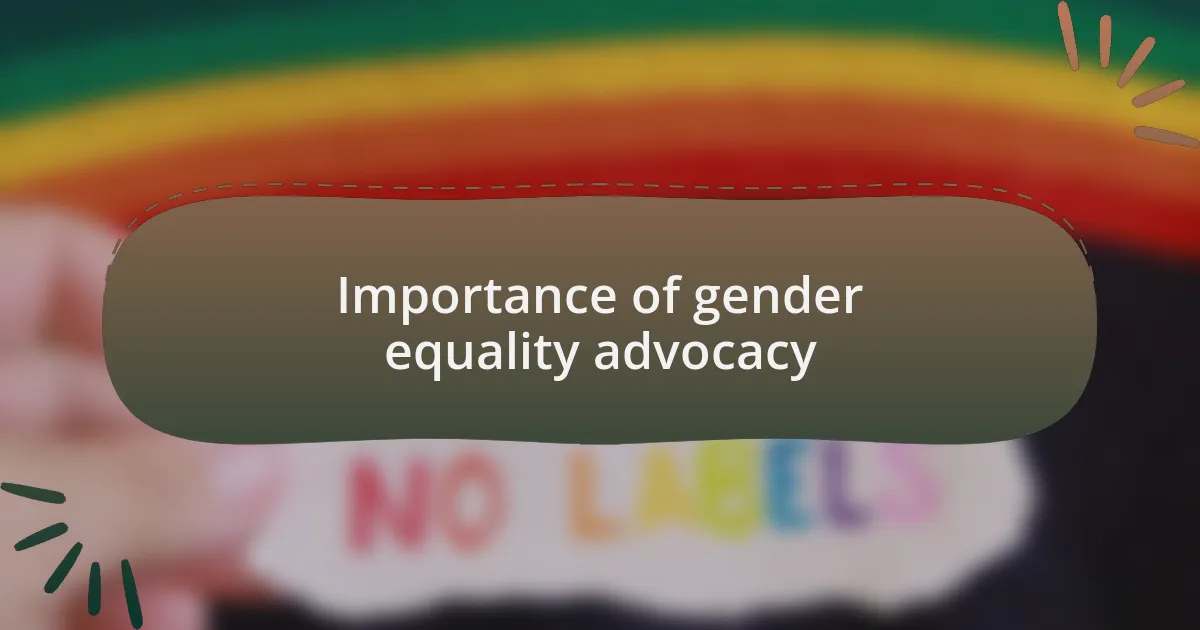
Importance of gender equality advocacy
Championing gender equality advocacy is essential in reshaping perceptions and practices within education. I remember a particular workshop I attended where we discussed the impact of diverse role models in teaching. Seeing women in leadership positions not only inspired girls but also provoked boys to challenge traditional notions of strength and intelligence. This simple shift can ignite passion and ambition across genders.
Equally important is the need to deconstruct stereotypes woven into our educational systems. I once observed a science fair where boys were instinctively given credit for leadership, while girls struggled for recognition despite presenting equally innovative projects. If we can advocate for more equitable practices, we provide a fertile ground for all students to flourish. Isn’t it crucial that every child’s potential is nurtured, rather than stifled by preconceived notions?
Ultimately, promoting gender equality creates a more inclusive educational environment that benefits everyone. I feel the potential of classrooms that celebrate diverse contributions and perspectives every day. When we embrace this advocacy, we not only empower individuals but also enrich our entire society, allowing unique voices to rise and resonate throughout our communities.
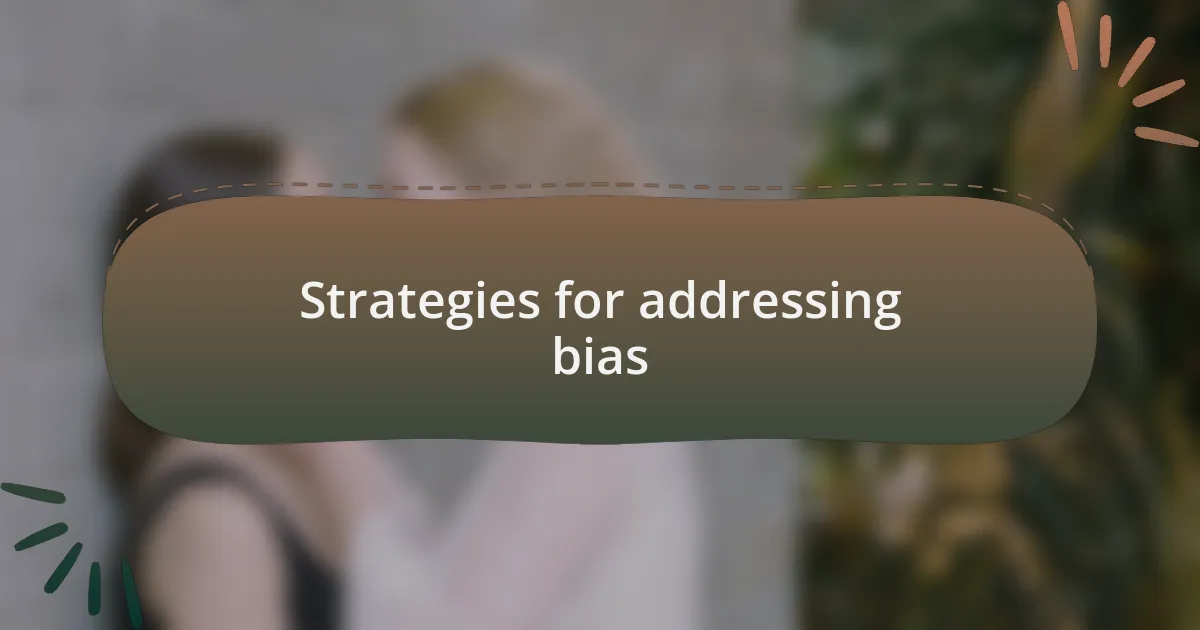
Strategies for addressing bias
It’s essential to implement targeted training sessions for educators focused on recognizing and addressing bias. I recall a time when my own teaching approach underwent a transformation after participating in a workshop that emphasized reflective practices. Suddenly, I became more aware of how my expectations influenced classroom dynamics and how crucial it was to foster an environment where every student felt validated.
Another effective strategy I found valuable is the integration of inclusive curriculum materials that reflect diverse experiences and perspectives. When I introduced readings and case studies highlighting underrepresented voices, my students engaged differently; they began to connect more personally with their learning. Have you ever noticed how representation can change the way students see themselves within the subject matter? It truly makes a remarkable difference.
Creating safe spaces for open dialogue is also fundamental in addressing bias. I initiated regular discussion groups where students felt comfortable sharing their experiences and concerns related to gender. Hearing their stories was enlightening and often heartbreaking, yet it sparked meaningful conversations that led to collective understanding and growth. How do we expect change if we don’t first listen?
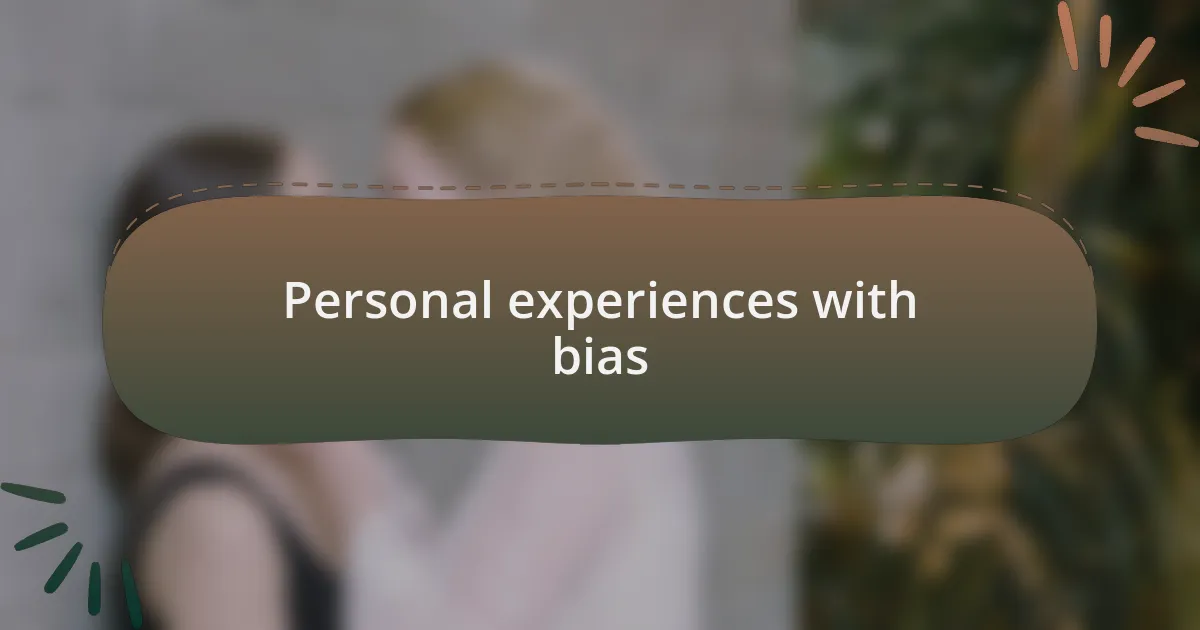
Personal experiences with bias
In my early years as an educator, I encountered bias firsthand during a parent-teacher conference. A mother expressed skepticism about her daughter’s abilities in a STEM subject simply because she was a girl. I felt a mix of anger and sadness, realizing just how powerful societal expectations could be. That moment pushed me to consider how biases, often unrecognized, could limit not only students’ potential but their entire educational experience.
On another occasion, I noticed a disparity in class participation between boys and girls. During a group project, I observed how often I called on male students, unconsciously reinforcing existing stereotypes. Reflecting on this made me question my own actions: what biases was I bringing into the classroom? This realization motivated me to actively work on ensuring balanced participation, which transformed the dynamics of my classroom, allowing all voices to be heard.
I also remember a particular student who struggled to find her place in discussions, often hesitating to share her insights. After encouraging her to express herself more freely, she opened up about feeling undervalued in a male-dominated environment. Her vulnerability struck me deeply and reminded me of the importance of empathy in combating bias. How many other students remain silent, I wondered, simply because they’re not given the space to be heard? These experiences fueled my passion for advocating gender equality in education and shaped my understanding of the impact of bias.
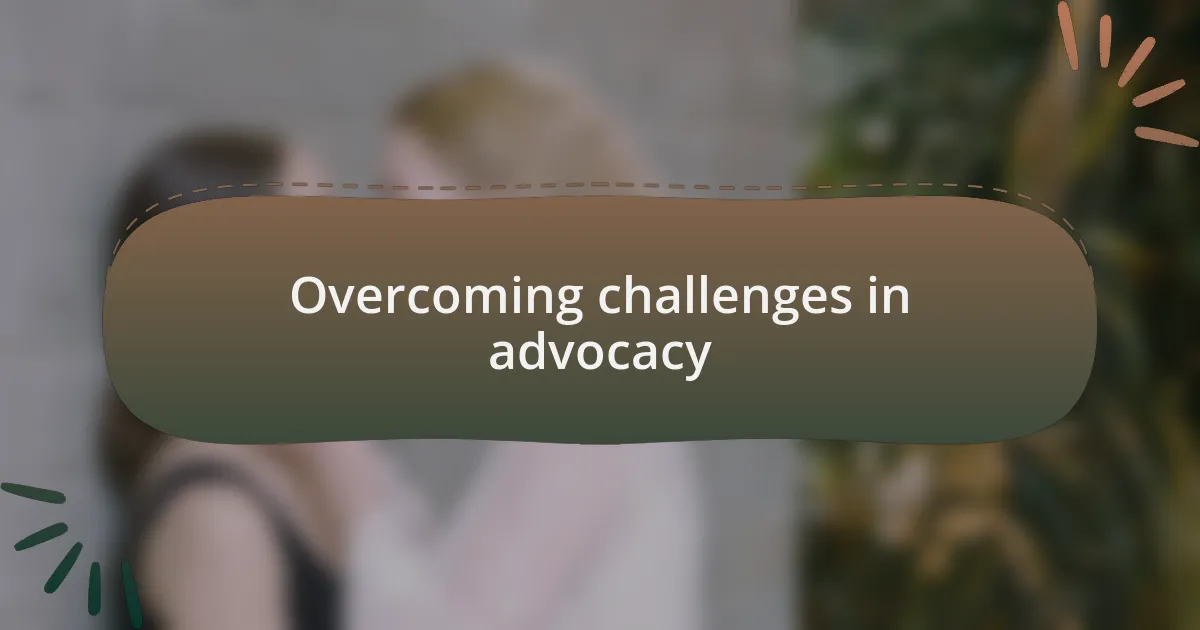
Overcoming challenges in advocacy
Facing challenges in advocacy is part of the journey. I distinctly remember a time when I organized a workshop focused on encouraging girls in science. Despite my enthusiasm, I encountered resistance from some faculty members who believed the status quo was sufficient. Their reluctance taught me that advocacy involves not just presenting new ideas but also navigating entrenched mindsets. How do you convince someone who is comfortable with the way things are?
I once found myself in a heated discussion during a faculty meeting about gender-inclusive curricula. It was disheartening to see some colleagues dismiss the need for change, favoring traditional approaches that did little to support all students. In those moments, I realized that advocacy hinges on finding common ground. I made a point to listen to their concerns while gently sharing evidence of how inclusive practices benefit everyone. This back-and-forth sparked dialogues that eventually led to tangible changes. Isn’t it fascinating how a little patience can shift perspectives?
One of the most rewarding aspects of advocacy is witnessing transformation. I had a student who initially resisted joining an all-girls coding club, citing concerns about fitting in. After much encouragement, she not only participated but thrived, eventually leading the group’s projects. Seeing her confidence bloom reinforced my commitment to advocacy. It made me reflect on this: what if every hesitant voice is simply waiting for the right support to join the conversation? The experiences have been eye-opening, and they remind me every day that overcoming advocacy challenges is crucial for creating an equitable educational landscape.
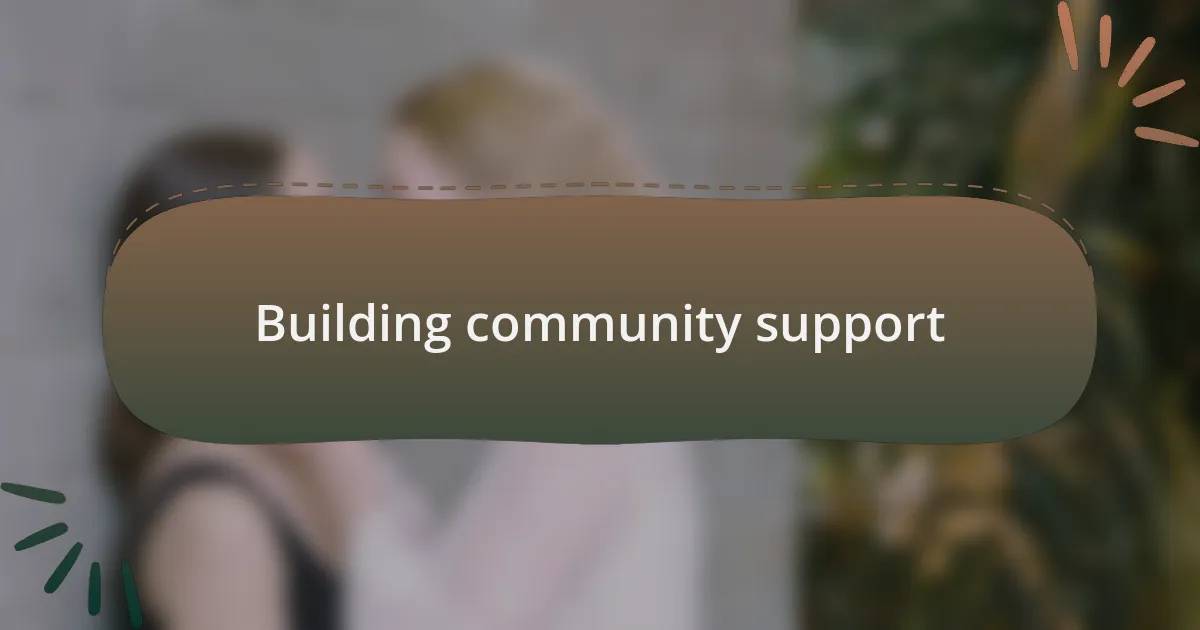
Building community support
Building community support is essential for any advocacy effort. I recall a time when we needed to mobilize support for a local initiative aimed at mentoring young girls. I reached out to parents, local businesses, and community leaders. The surprise was how eager they were to contribute once they understood the impact of empowering our girls. Have you ever witnessed how a single conversation can ignite passion within a community?
I organized a community meeting that turned into an unexpected celebration of shared goals. To my delight, many individuals, initially hesitant to participate, started sharing their own experiences with gender bias in education. These stories not only enriched our discussion but built a beautiful tapestry of shared aspirations. Through these connections, I learned that fostering relationships is crucial; it turns support into a collaborative effort rather than a solitary mission. Isn’t it powerful how community voices can amplify advocacy?
One evening, while volunteering at a local event, I saw firsthand the ripple effect of community support. A single mother spoke about her struggles, and her vulnerability struck a chord. Others began to share similar narratives, creating a sense of solidarity that I had only hoped for. This experience reinforced my belief that advocacy thrives when people feel connected and supported by one another. Why do we often underestimate the strength of community?
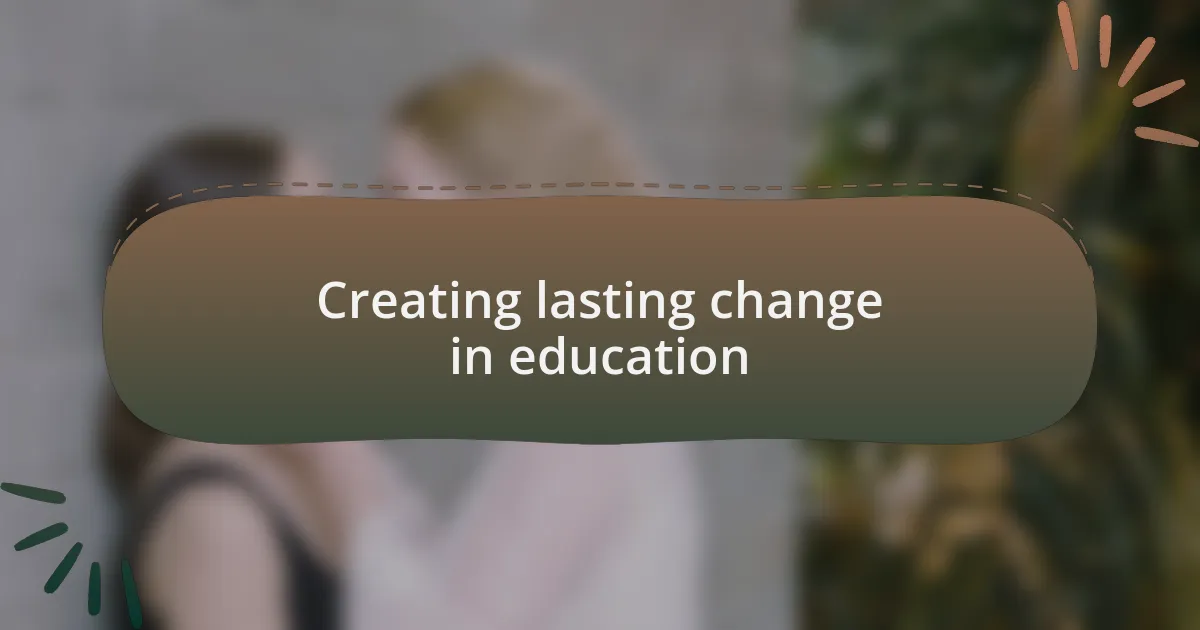
Creating lasting change in education
Creating lasting change in education requires a commitment to ongoing dialogue and action. I remember attending a series of workshops where educators shared strategies for incorporating gender equity into their curricula. It was enlightening to see how small adjustments in teaching methods can lead to transformed attitudes. Have you considered how one lesson can shape a student’s perspective for a lifetime?
In my experience, implementing policies that embrace diversity plays a significant role in fostering lasting change. During a school board meeting, I witnessed passionate discussions about gender-sensitive resources that could reshape how students learn about history. This invigorating exchange not only opened doors but also highlighted the need for continuous advocacy. Isn’t it exciting to think about the possibilities when we challenge the status quo?
Another key aspect is mentorship. I recall organizing a mentoring program where older students guided younger ones, focusing on self-confidence and academic support. Witnessing a shy girl blossom into a proactive leader was a revelation. This personal connection cultivated a supportive environment, proving that change doesn’t just happen on a systemic level; it thrives in the hearts and minds of individuals. How often do we underestimate the profound impact of mentorship in education?